Teaching children about feelings
9 Ways To Teach Children About Feelings
I often tell my children to use their words when they are upset. I assume they know what they are feeling and can verbalize it to me. Wrong! It’s difficult for children to say what they are feeling because many times they don’t know what to name the feeling they are experiencing. Instead, they show us how they are feeling by throwing temper tantrums and having meltdowns. We first need to teach children the words to express their feelings before we require them to “use their words.”
Young children can be taught basic emotions such as happy, mad, sad, and scared as early as two years old. As they get older, you can explain emotions such as feeling frustrated, nervous, shy, etc. to them.
Here are some ways you can help your child learn the language they need to express their feelings:
1. Sing songs to help young children learn how to express their feelings. I came across this version of a preschool classic, If you are happy and you know it at Sunflowersstorytime. com. It goes:
If you’re happy and you know it clap your hands.
If you’re surprised and you know it say “Oh my!”
If you’re sad and you know it rub your eyes “Boo hoo”
If you’re scared and you know it shiver and shake.
If you’re sleepy and you know it close your eyes.
If you’re angry and you know it stomp your feet.
And always make sure end up with “happy” again.
They suggest having pictures of each emotion to show the kids as they sing the song.
2. Use games and activities to teach children about feelings.
Children like learning through playing and having fun. A fun game to help kids learn about feelings is Feelings Charades.
For this game you will need to make a feelings cube. Paste pictures of feeling faces on a tissue box. Have kids roll the box and whatever feeling face it lands on they have to act out.
You can find free feeling picture cards here.
You can also use the cards to play Memory. Simply print out two sets of Feeling Cards, shuffle them and then have your child find the matching Feelings Card.
3. Watch kid-friendly videos about feelings. Kids respond well to visual stimulation. Here are two videos I like to show kids to help them learn about feelings:
- Elf Feelings Video
- The Feeling Song
4. Get into the habit of labeling the feelings you believe your child is experiencing. For example, if your child runs up to you and hugs you as you walk through the door, you can say something like “someone is excited to see me” or “someone is happy I’m home.” Labeling your child’s feelings as they happen helps them to build their feelings vocabulary.
5. When you read to your child, discuss how the characters in the story are feeling.
Point out any clues that lets you know what they are feeling such as facial expressions or behaviors. Then explain to your child why the characters feel the way they do. If your child is able to, let them take a turn identifying how the characters are feeling and why.
Then explain to your child why the characters feel the way they do. If your child is able to, let them take a turn identifying how the characters are feeling and why.
I like to read The Way I Feelto young children because it uses beautiful images to describe a range of feelings.
6. When your child does something that upsets someone else, let them know how their behavior might make others feel. For example, “When you called your sister names, she felt sad and her feelings were hurt. “ This will help your child be mindful of what they say and do to others. You can follow up by asking how they would feel if someone did the same thing to them. Encouraging your child to put themselves in someone else’s shoe teaches them how to be empathetic. Empathy is an important life skill that will allow your child to maintain positive relationships with other people.
7. Model appropriate ways to express feelings to your child. Children are always watching us and like sponges they soak everything up. Good and bad. If your child sees you expressing your feelings in a positive way, over time they learn to do the same. However, if they see you yelling and throwing things when you get upset, they are more likely to mimic this behavior.
Children are always watching us and like sponges they soak everything up. Good and bad. If your child sees you expressing your feelings in a positive way, over time they learn to do the same. However, if they see you yelling and throwing things when you get upset, they are more likely to mimic this behavior.
8. Teach your child appropriate ways to express their emotions.
It’s important that children learn that it is OK to have their feelings. What matters is how they express them. When your child is calm, discuss with them ways they can calm down when they are upset. The ABC’s of Calming Down is a great resource that contains 26 alphabetized calm down strategies to help children calm down.
9. Praise your child when they use words to express their feelings. Having the self-control to express your feelings appropriately is no easy feat. There are many adults who are unable to do this. When your child tells you how they are feeling instead of having a complete melt down, praise them for doing so. Be very specific. For example, “I like how you told your sister that you were sad when she called you names. That was very mature of you.” Praising your child for practicing good behavior makes them more likely to do it again in the future. It also lets them know that you are watching them and notice when they do good things.
Be very specific. For example, “I like how you told your sister that you were sad when she called you names. That was very mature of you.” Praising your child for practicing good behavior makes them more likely to do it again in the future. It also lets them know that you are watching them and notice when they do good things.
It is important that children learn how to identify and express their feelings in an appropriate manner. Kids who are able to express their feelings are less likely to have meltdowns and temper tantrums. They also have an easier time making friends and getting along with others. For additional resources on teaching children about feelings, check out these Feelings Task Cards.
In what ways do you foster your child’s emotional intelligence?
If you like this article you might also like these articles. (Click on images)
Lessons and Activities to Build Self-Awareness – Proud to be Primary
Teaching emotions for kids is easy with these social-emotional learning ideas and activities for the classroom.
Social-emotional learning is a key component in teaching young children. You’ll find that a good part of your day is spent educating your students about how to recognize, manage and express feelings. Because of this, below are engaging ways to teach emotions for kids in your classroom.
Everything You Must Know to Teach Emotions to Kids
Why do students need help learning how to express healthy emotions and feelings?
Students learn healthy emotional habits and ways of expressing their feelings in several ways. They learn at home as well as in their interactions with their family and friends. Children tend to pick these things up naturally. They learn by watching how others respond and mimicking their behavior. Many kids are active in their churches, community centers, sports, and hobbies. In those places, they learn how to interact with friends and neighbors as well.
But, what about the students who don’t have such opportunities?
It’s up to us, as educators, to model, teach, and encourage them to practice healthy emotional responses to everyday situations and events! Helping children to express their feelings and handle difficult situations with calm is our ultimate goal.
1. Helping Kids Identify Different Emotions
Children should be taught the language necessary to label and identify the different emotions they may experience. The reason is, we need to let them know that feeling different emotion is normal. By giving them the vocabulary needed to describe how they’re feeling, you are encouraging them to express themselves productively.
- Recognizing Facial Expressions and Body Language: Children need to learn how to identify their own emotions, as well as others. One way to do this is by learning to pay attention to their own body signals, such as a frown and queasy stomach when nervous, or balled fists and tight shoulders when angry. Once they can recognize it in themselves, they can pick up on facial expressions and body language of others and then learn to react accordingly. In your morning meetings, perhaps spend five minutes modeling and discussing different emotional states.
- Clip Chart: One way to encourage recognition of feelings is to provide a visual reference for them to use.
 A clip chart helps students to recognize and identify how they are feeling. They simply place a clip on the chart in the space that shows how they are feeling.
A clip chart helps students to recognize and identify how they are feeling. They simply place a clip on the chart in the space that shows how they are feeling.
- Play Games: One fun way to introduce, teach, and practice the names of emotions is to play an engaging game with students, such as these emoji card games, matching games, and board game.
2. Teaching Kids Healthy Expression of Emotions
We all feel the full range of emotions. Wherever they are on the happy or sad, engaged or bored, proud or embarrassed, ends of the spectrum, we can help them express those emotions in a safe and healthy way. The classroom is a great place to learn and practice!
- “I Feel…” Statements: To learn how to express their feelings appropriately, students need to be taught how to use “I feel…” statements. Instead of screaming insults at another child who broke his crayon, little Johnny can say “I feel sad that you broke my crayon”, opening up the communication between the two students.
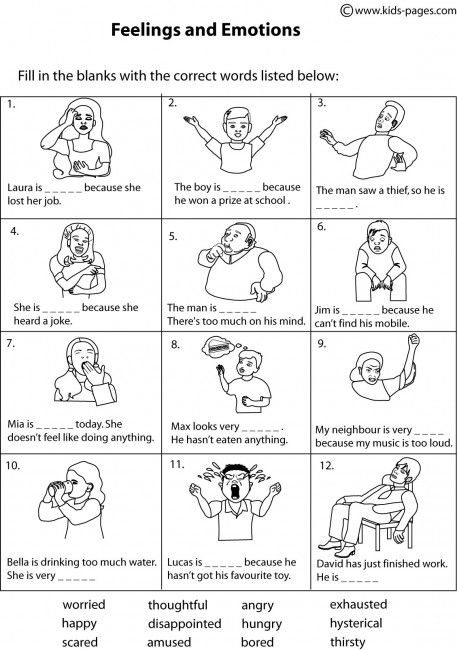 This allows for healthy conflict resolution.
This allows for healthy conflict resolution. - Coping with Extreme Emotions: Sometimes we must step in and help kids deal with the emotional roller coasters they sometimes find themselves on. Their extreme emotions get out of control and they need help finding their way back to calmness. We must realize that addressing the whole brain is key to understanding how to help them best.
- Teaching Emotional Rights: It’s important for children to understand and assert their rights when it comes to emotions. This helps them maintain healthy boundaries with their friends and peers, and be respectful to teachers and adults.
3. Connecting Kids to Experiences with Emotions
Children learn to embrace their emotional state by realizing that it is normal and ok to feel the way they do. It’s our job to give them opportunities to label their feelings correctly. Emotional memory is strong! We can harness that power by helping students connect their experiences in the classroom with their emotions. By recognizing and acknowledging their feelings during a learning activity or classroom event, we can increase the chances of it sticking in our students’ long-term memory. You see, that’s why emotions for kids is so important!
By recognizing and acknowledging their feelings during a learning activity or classroom event, we can increase the chances of it sticking in our students’ long-term memory. You see, that’s why emotions for kids is so important!
- Journaling: Encouraging students to journal about their feelings is helpful. They express their feelings by writing about learning tasks, field trips, or school events. For one, we often use this learning method in our classrooms for improving handwriting, spelling, vocabulary, and of course writing skills.
- Emotion Sort: Have students sort pictures of children with experiencing different emotions. By doing so, they will gain practice recognizing facial expressions and body language and therefore, feel more confident understanding their own and others feelings.
4. Teaching Kids about Brain Biology and Emotions
The human brain is a fascinating subject, even for the youngest learners. Teach them what the parts of the brain are called, and talk about how different parts of the brain control their emotions and feelings.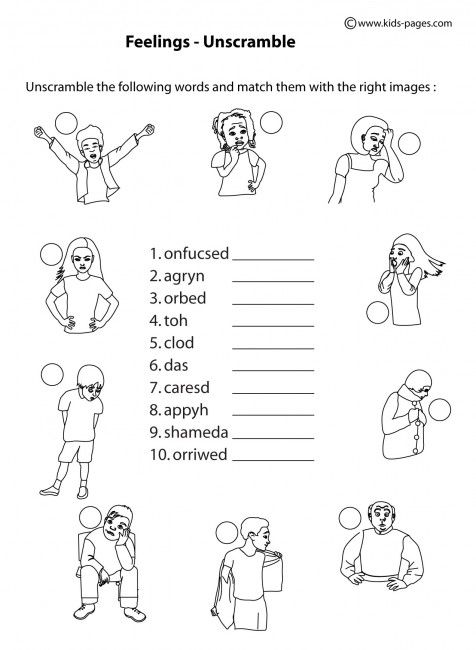
- Brain Craftivity: Try this fun craft activity that teaches children about the parts of the brain that control the emotions.
- Upstairs and Downstairs: To try to explain how the parts of our brain work together, and how the emotions part can sometimes take over, try explaining it in terms they can understand, such as the “upstairs and downstairs.”
5. Encouraging Kids to Have a Positive Mindset
Additionally, add in self-talk and self-motivation skills. Positive and encouraging self-talk will help your students succeed, and create a more positive classroom environment overall. For example, you can teach them ways to feel good and focus on positivity. Here are ways to influence them to have a good attitude at school and teach emotions for kids.
- Create a Vision Board: Vision boards are used in all types of professions, from business to graphic design. They can be used in the classroom too! Help children visualize what they desire and what makes them happy.
 Precisely, when they have an image in their mind of what makes them thrive, they are more likely to reach their own goals, and ultimately succeed in the classroom.
Precisely, when they have an image in their mind of what makes them thrive, they are more likely to reach their own goals, and ultimately succeed in the classroom.
- My Heart Map: This creative activity encourages children to thoughtfully consider what makes them happy and depict it on paper. It’s a great way to help them own and recognize their emotions and focus more on having a positive outlook.
- Teach Growth Mindset: Any lesson about emotions and feelings can easily be integrated into a growth mindset curriculum plan. The two go together like peas and carrots!
Resources for Teaching Emotions with Kids
Emotions Self-Awareness Unit
The Emotions: Social Emotional Learning Unit includes 5 detailed, research-based lessons to teach emotions for kids. It is filled with hands-on and mindful activities. The curriculum teaches children about how their brain controls their emotions. It also teaches how to identify and express how they are feeling, and ways to encourage a positive mindset.
Emotions Book Companions
This emotional awareness resource includes 5 book companions on popular children’s books that relate to feelings and emotions (The Color Monster; The Feelings Book; Glad Monster, Sad Monster; F is for Feelings; In My Heart).
Children will participate in classroom discussions and book chats, share their feelings in written form, and participate in fun, engaging activities that build emotional awareness and social skills.
This emotions book companion resource includes a detailed lesson plan, guided questions, anchor chart, writing response, and follow-up activities (printable and digital included) for all 5 books. Great for distance learning and remote teaching of social-emotional skills!
FREE Emotions Lesson & Feelings Journal
Help students learn to identify and process their feelings in an emotions journal.
Download a free lesson and activities on identifying and labeling emotions from the Emotions unit by clicking the image below and signing up.
Social-Emotional Learning Curriculum
The mind + heart Social Emotional Learning Curriculum includes 8 units with 5+ detailed, character education, research-based LESSONS filled with TONS of hands-on and mindful ACTIVITIES that encourage children to express themselves and build important emotional and social skills. It includes emotions for kids!
More About Teaching Emotions
Emotional Skills Books and Videos
Self Regulation Strategies, Books & Videos
Empathy Skills Books & Videos
PIN for Later
FREE Social Emotional Learning Email Series
Sign up for the social emotional learning email course filled with tips to get you started, lesson and activity ideas, PLUS tons of FREE resources you can access right away. Everything you need to teach social skills and emotional literacy in the classroom!
First Name
Personal Email Address
We use this field to detect spam bots. If you fill this in, you will be marked as a spammer.
If you fill this in, you will be marked as a spammer.
I'd like to receive the free email course.
This form collects information I will use to send weekly emails with strategies, promotions, and resources. Unsubscribe at any time. Powered by ConvertKit
nine0034 What can the inability to express emotions lead to If you learn to recognize your emotions and manage them, you can achieve great success in the social aspect. The formation of personality and character begins in early childhood, so parents should teach children to recognize their emotions and control them. Ways to develop emotional intelligence Emotional intelligence develops through co-creation. Sculpt, draw, make various crafts together with your baby, involving emotions in the process: a plasticine hedgehog smiles because he found an apple, a drawn girl cries because she lost a ball, etc. Let the child pretend to be an angry cat. The next step may be to study the shades of emotion: an angry cat, angry, indignant. nine0034 Reading books together helps in recognizing emotions. Discuss what you have read, ask leading questions, listen carefully to the child's answers, clarify what your son or daughter thinks the protagonist of the book feels. Pay attention to the work of V. Shimansky "What are emotions and how to be friends with them." The main characters of the book are funny Monsics, funny creatures that will teach children how to deal with various emotions: anger, anger, disappointment, immense joy, excitement, rage, resentment, fear, etc. nine0034 A child must be able to pronounce his emotions so that adults can hear and understand him. The kid turns to the closest people, his parents, when he experiences strong life situations. Perhaps he is afraid of the upcoming exam, is afraid of the offender, is afraid of the dark. It is important to teach a little person to pronounce what he feels so that in the future he does not have to use physical force in an incomprehensible situation. As long as the boy or girl speaks out their emotion, listens to the opinion of adults, finds a solution to the problem together, they will cool down and be able to calmly find a way out of the situation. nine0034 You can wait and do nothing or make some decision. But the child must clearly understand that he has time to recognize his feelings and think about what to do in this situation. At the same time, parents should be nearby, experience the baby’s emotions together and just sympathize - for small and large children this is very important. Praise your sons and daughters more often, say how great they are, how proud you are of them. Criticize not the child, but his behavior. And do not forget to take care of yourself, because if adults are dissatisfied with their lives, the child will definitely copy your behavior. Teach children to enjoy every minute, smile more often, get positive emotions from every little thing. Everything that happens around should bring joy, not disappointment. Games for the study of emotional expression
If the child is about to throw a temper tantrum, invite him to dance or run a little. If you want to cry, take a few deep breaths together with him. Be there and help your baby deal with his emotions so that in the future it will be easier for him to deal with his feelings and make the right decisions, and not hide in himself or solve problems with the help of physical force. nine0034 Source: detkiguru
|
Emotional intelligence. How to teach a child to understand and express his feelings
A child needs to learn to understand his feelings and emotions and be able to tell you about them. He must have developed Emotional Intelligence.
Emotional Intelligence is the ability to recognize and manage one's feelings and emotions, and to understand the feelings of others. The better a person is developed, the more consciously he builds his life and relationships with other people. nine0034
The better a person is developed, the more consciously he builds his life and relationships with other people. nine0034
If your child does not yet know what his feelings are called and often cannot understand and tell what is happening to him, help him develop his Emotional Intelligence. This article will help you with this.
Name the child's feelings and emotions
Build a vocabulary of emotions for the child so he can say:
– I'm so happy!
- I'm angry!
- I'm afraid.
- I'm lonely.
- I'm sad.
- I'm worried.
- I miss you.
- I'm worried, etc. nine0045
Allow your child to experience emotions
Do not allow your child to experience any of his emotions. After all, by forbidding, we teach the child to suppress them. But at the same time, they will not go anywhere, but will create anxiety, tension and aggression in him.
Remember that there are no bad and good emotions. There are pleasant ones and unpleasant ones. And each emotion can be useful in a particular case.
And each emotion can be useful in a particular case.
Show your child how to express emotions
Tell and show your child that he can express emotions in different ways:
- Tell you about them: “I'm sad”, “I'm funny”.
- Draw them.
- Mold with plasticine or sand.
- Through physical actions: jump, run, dance.
- Write about how he feels.
- Tell through the game.
Name the child's feelings that he is experiencing now:
- You miss your dad very much.
– I understand that you are offended.
– I can see how pleased you are. nine0124 – I understand that you are sad now.
– You seem to be very angry.
Be an example for a child - tell him how you feel. Tell him about your emotions and feelings. After all, children look at us and learn.
Also try to talk less and listen more to your child. And you need to listen very carefully! Remember that you have TWO ears, and only ONE mouth, and not vice versa))
Sympathize with the child
Accept the feelings of the child, sympathize and support him. Explain and offer options for solving the situation:
Explain and offer options for solving the situation:
– I'm sorry, I didn't mean to offend you, let's hug.
- Let's think about what we can do.
– I understand how offended you are.
- Dad loves you very much and does not give you (sweets, toys, etc.), because it's bad for you.
- Offer the boy to change.
- I see you want to be alone. Come back when you're ready to play together again.
- I would be offended too, I UNDERSTAND YOU.
There are an infinite number of options for such supportive phrases, but the main thing in them is sympathy, acceptance, support and RESPECT for the child's feelings. nine0034
And this doesn't mean at all that you have to yield to him in everything and follow his lead. You can stick to your line of behavior, and at the same time accept the feelings of the child and help him live them.
Examples of dialogues with a child
The dialogues below create a safe space in which your child will learn to better understand himself and others, and will also feel your support and acceptance.
Let's look at specific situations.
Example 1. You see that the child is offended
Instead of such offensive phrases as: “stop being offended”, “they carry water on the offended”, “come on, what nonsense”, “I will also be offended by you” etc. .d., VOICE the child’s feeling: “I see that you are offended by me (dad, grandmother, boy)” .
Next, explain to the child WHY he feels this:
– Because I told you so sternly and it became unpleasant;
- Because dad didn't give you what you wanted; nine0124 - Grandma played a joke on you and you didn't like it;
- The boy did not give you a toy, etc...
Teach the child how he can say about the experience in his own words: "You can say:" I was offended by you "and then it will be clear to me what is wrong with you. »
Example 2. You see that the child is angry to your room, etc., say:
- I see you're angry with your sister because she broke your house Of course, it's unpleasant when what you build gets broken. You can tell your sister, "I'm mad at you, you can't do that!" Let's think about how we can fix this.
You can tell your sister, "I'm mad at you, you can't do that!" Let's think about how we can fix this.
Example 3. You see that the child is acting up
Instead of: “stop whining”, “shut your mouth”, “tired already”, “well, what else do you need”, “I am also tired”, “stop now”, say:
– I can see something is bothering you. Perhaps you are tired or have not had enough sleep, or are you hungry? Or maybe you want my attention? You can say: "Mom, I'm sad, hug me, I want your attention." Come to me. nine0034
- I understand you were upset because you didn't want to leave the set. Let's come back here tonight. And now, on the way home, let's play the game "who sees more red cars."
Example 4. You see that the child is afraid or worried
If your child is afraid, then instead of: "coward", "it's not scary at all", "don't invent any nonsense", say:
- I see you are a little afraid because the room is dark. Tell me what's bothering you (listen) Let's think about what can be done.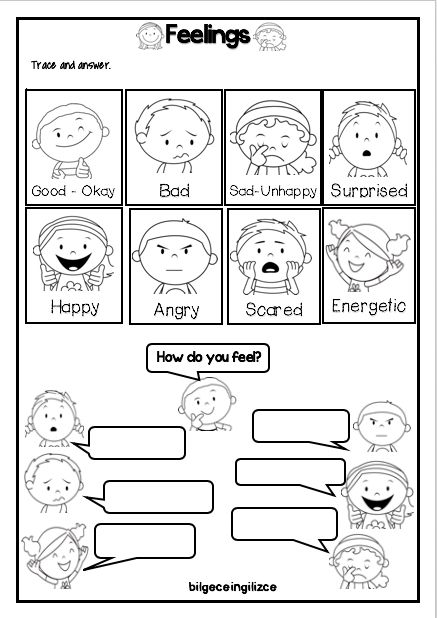

 The ability to communicate with people is very important for building relationships and developing a harmonious personality, but intelligence does not play a fundamental role here. If you do not develop emotional abilities, it will be difficult for a person in adulthood to evaluate various situations and make the right decision for himself. It’s hard for such people to give up “I want” in favor of “necessary”. Those who have not learned to control their emotions and manage them since childhood find it hard to do routine, monotonous work. They do not know how to control themselves in stressful situations, often splash out negativity and aggression on others. There may be problems with expressing one's own desires, it will be difficult to find a common language with others. nine0034
The ability to communicate with people is very important for building relationships and developing a harmonious personality, but intelligence does not play a fundamental role here. If you do not develop emotional abilities, it will be difficult for a person in adulthood to evaluate various situations and make the right decision for himself. It’s hard for such people to give up “I want” in favor of “necessary”. Those who have not learned to control their emotions and manage them since childhood find it hard to do routine, monotonous work. They do not know how to control themselves in stressful situations, often splash out negativity and aggression on others. There may be problems with expressing one's own desires, it will be difficult to find a common language with others. nine0034 
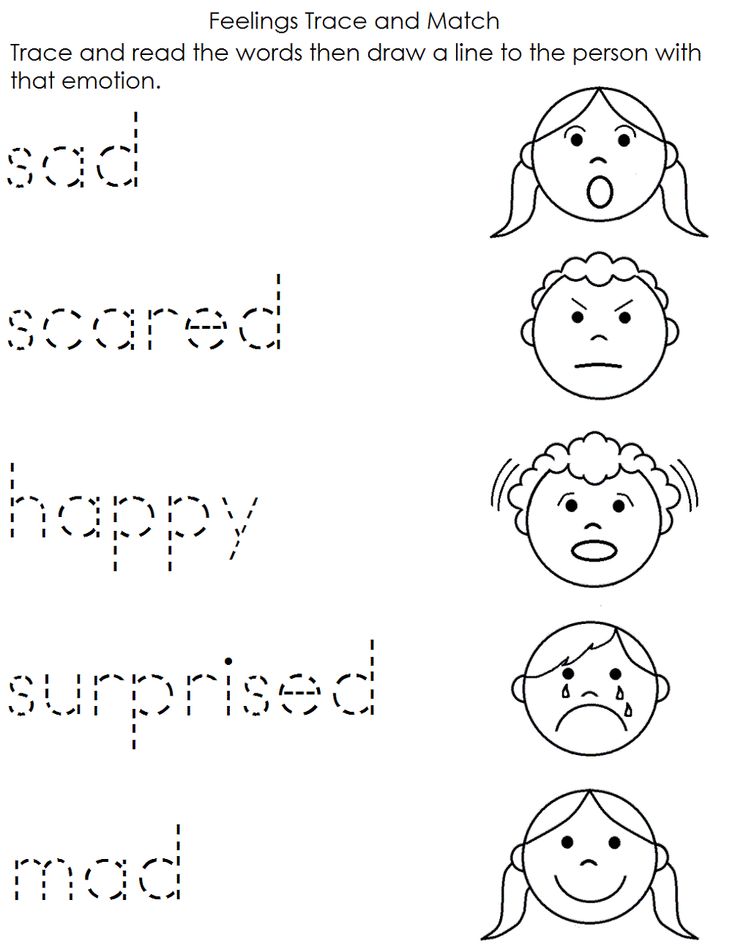
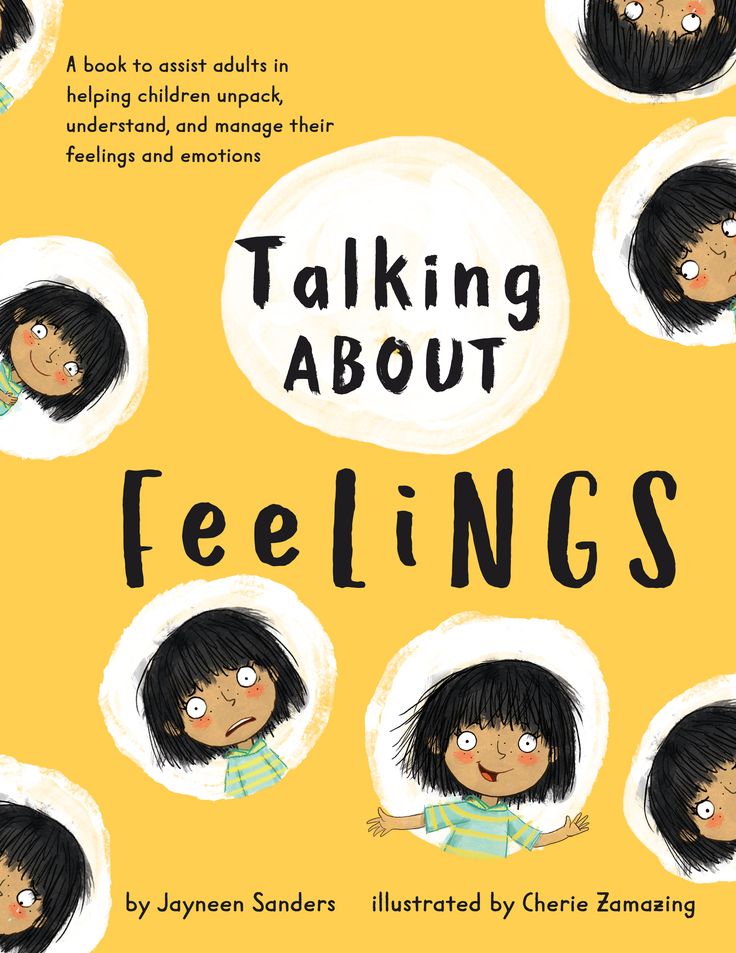 nine0045
nine0045 









